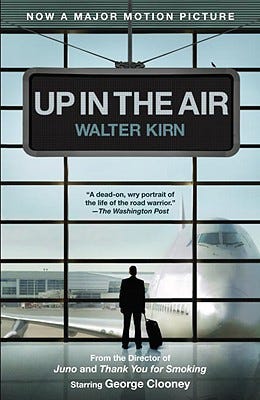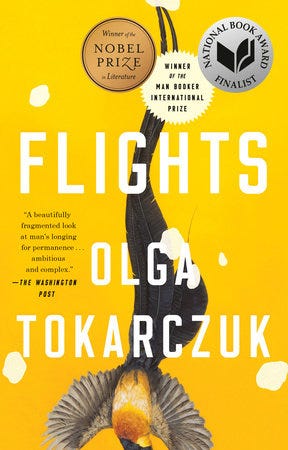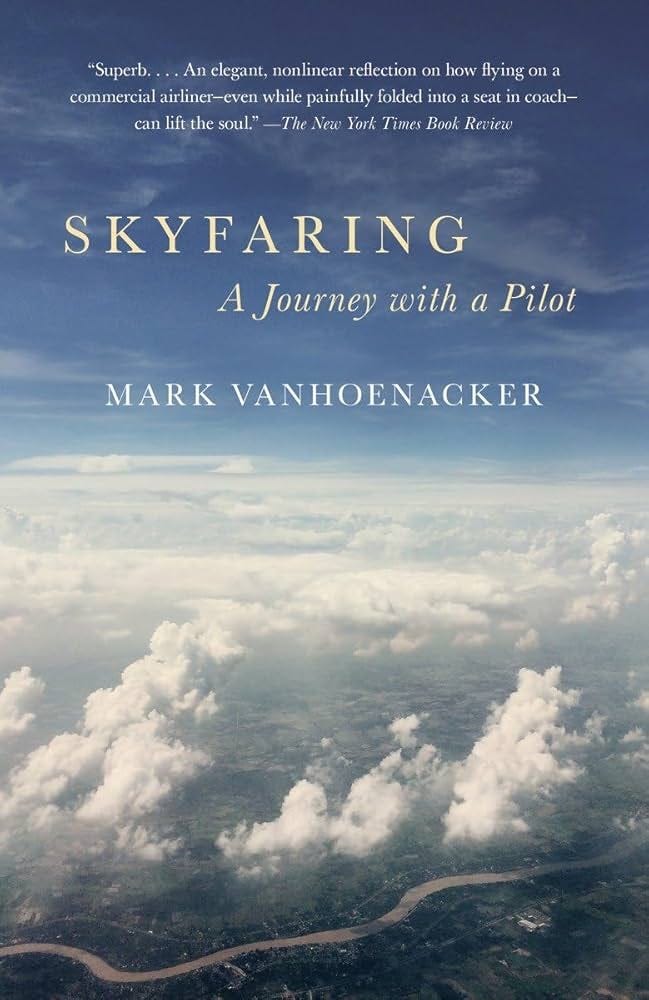Good Sentences: Airports (November 2024)
As millions of people across the United States travel during the Thanksgiving holiday, we thought we would put together some materials themed around a place where many will be spending a not insignificant amount of time: airports.
Enjoy!
—The Good Sentences Team
1. Fiction: Up in the Air by Walter Kirn (2001)
Favorite Sentence: “You long for a windfall that will let you quit and pursue your great hobby: [insert your hobby].”
—Picked by Carl Dennis, Class of 2025 (Home Airport: Buffalo Niagara International Airport)
2. Poetry: Tailspin by Edward Field (2007)
Favorite Lines:
“but the trick is, as in everything, to go with the turning willingly”
—Picked by Jaden Diebo, Class of 2026 (Home Airport: Hollywood Burbank Airport)
3. Essay: I’m Going to Close This Deal Using Business Words I’ve Heard Men Yell in Airports by Wendi Aarons (2018)
Favorite Sentence: “Yes, I realize that you just need my signature to order the new carpet for my stairs, and there’s no ‘deal’ to be made because your price isn’t negotiable, and that’s why nobody here knows what the hell I’ve been yelling about for the past five minutes.”
—Picked by Danica Fong, Class of 2025 (Home Airport: San Jose Mineta International Airport)
Michigan Sentences: Here’s an article about how, over 100 years ago, the University of Michigan created the first Aerospace Engineering program—and course—in the United States.
110 Years of Course Evolution in Aerospace Engineering (2024)
Sample: “The nation’s first collegiate aeronautics program began to take shape at the University of Michigan in 1914, just 11 years after Orville Wright successfully completed the first powered aircraft flight at Kitty Hawk. That year, the university established its first course in aeronautics, with seven students in attendance and led by Professor Felix W. Pawlowski. The two-hour Theory of Aviation class was the first aeronautical engineering course taught in the United States, and Professor Pawlowski would put into motion the beginning of a long-lasting legacy that would evolve into the University of Michigan’s Department of Aerospace Engineering.”
Syllabus Sentences: Here’s a section of Good with Words: Speaking and Presenting I give my students when I am explaining to them the potential benefits of striking up a conversation with the person sitting next to you at a place like the airport or when you are seated on a plane.
Conversation Starters (Chapter 6)
“Imagine you are on a bus, subway, or commuter train. You have your coffee. You have your briefcase. And you also have a stranger sitting next to you. Should you talk to them?”
“To find out, two psychologists—Nicholas Epley of the University of Chicago and Juliana Schroeder of Berkeley—divided a pool of commuters into three groups:
Some were told to strike up a conversation with the person next to them.
Some were told to remain in solitude.
Some were told to do whatever they normally do”
“Epley and Schroeder found that people tend to think neither they nor the stranger would enjoy chatting. Yet what the data showed was just the opposite: the research subjects who were randomly assigned to talk had the most pleasant commute.”
“‘This pattern of results demonstrates a severe misunderstanding of the psychological consequences of social engagement,’ Epley and Schroeder explain, adding that the mistake is ‘particularly unfortunate for a person’s well-being given that commuting is consistently reported to be one of the least pleasant experiences in the average person’s day. This experiment suggests that a surprising antidote for an otherwise unpleasant experience could be sitting very close by.’”
If you’d like to see Epley explain the study in a bit more detail, check out the following video:
Book Recommendations
For good sentences about highly skilled—but largely invisible—professions, like the people who design “wayfinding” systems in airports
Invisibles: Celebrating the Unsung Heroes of the Workplace by David Zweig (2014)
Sample: “Wayfinding, Harding’s specialty, is the process of designing cues—from signage to lighting and color, even the architecture, anything at all—to help people navigate a built environment.”
For good sentences about “flights”—both aeronautical and metaphysical—by the 2018 winner of the Nobel Prize in Literature
Flights by Olga Tokarczuk
Sample: “Enormous airports assemble us together on the promise of connection with our next flight; it is an order of transferral and of timetables in the service of motion. But even if we had nowhere else to go in the coming couple of days, it would still be worth getting to know these spaces.”
For good sentences about flying—from the pilot’s point of view
Skyfaring: A Journey with a Pilot by Mark Vanhoenacker (2015)
Sample: “I am occasionally asked if I don’t find it boring, to be in the cockpit for so many hours. The truth is I have never been bored. I’ve sometimes been tired, and often I’ve wished I were heading home, rather than moving away from home just about as quickly as it is possible to do so. But I’ve never had the sense that there was any more enjoyable way to spend my working life, that below me existed some other kind of life for which I would trade my hours in the sky.”
Quick Tip
Here’s a quick tip on how to create some helpful cognitive distance when reviewing your work: write your document in one place, but edit it in another—perhaps even on a plane or in an airport!











